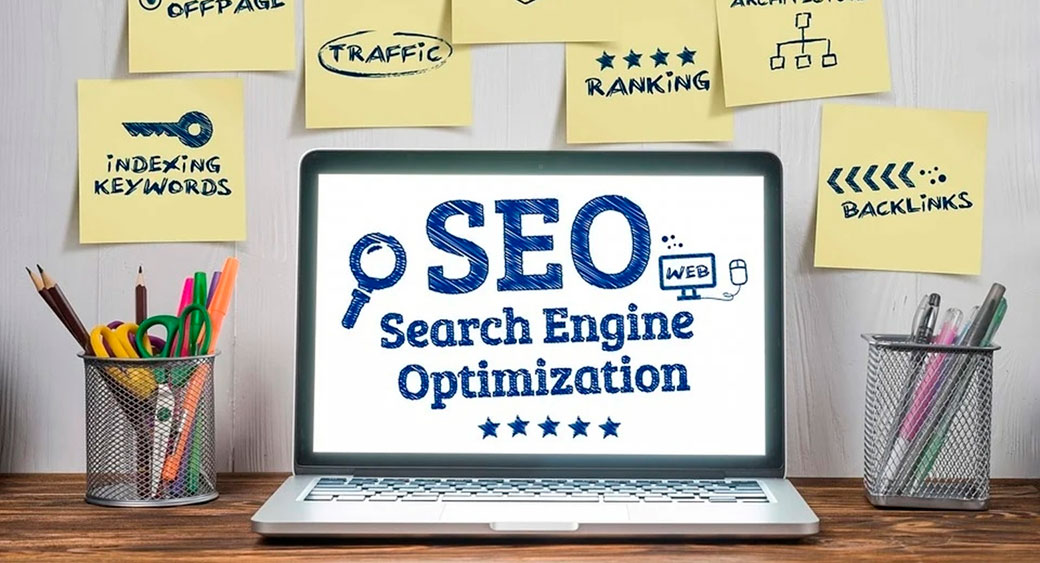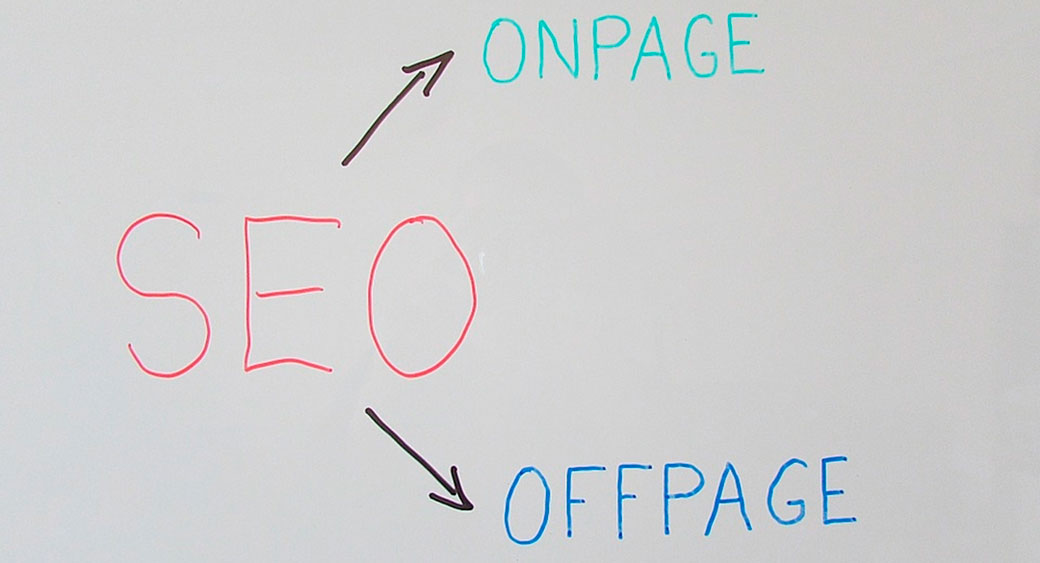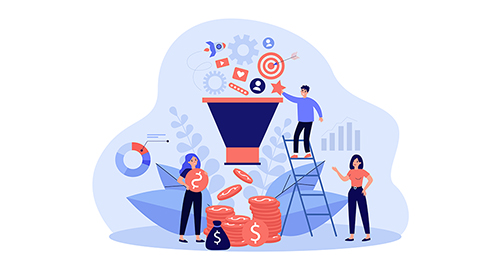Landing Page SEO – Best Practices and Tricks to Use in 2020
Long gone are the days when businesses considered their online presence to be of secondary importance, and for a good reason. In the Internet age, there’s undeniable benefit in having a strong, well-optimized presence on the web. Digital marketers understand the sheer power of engaging, optimized content in regards to raising brand awareness. What’s more, lead generation is no less deeply reliant on how well content performs on search engines. Thus, it is vital to ensure optimal search engine optimization (SEO) across all of your content. Naturally, this must apply to landing pages as well, since they’re valuable lead generation assets. But landing page SEO may be uniquely challenging, which is what this guide intends to address.

What is a Landing Page?
To start with the basics, let us define the terms – starting with what a landing page is. Landing pages are web pages that are entirely different from one’s homepage. As the name might suggest, landing pages are where visitors land and get information on a brand’s products or services. They serve a very different purpose than typical homepages or long-term product pages, and one should treat them as such. This is very notable when considering landing page SEO optimization, which this guide will focus on.
In essence, landing pages are campaign-based assets towards lead generation. They serve a focused purpose; to direct visitors to specific products or services, thus generating leads. Instead of being long-term by default, they are often short-term marketing tools based on the goals of an ongoing campaign. Thus, they are often targeted to a specific stream of traffic, and possibly a specific demographic.
Landing Page Types
Landing pages come in various types, each depending on a page’s function, form, and other factors. Marketers may recognize various numbers of landing page types; 5, 7, 13, and so on. For the sake of text economy and cohesion, it might be best to divide them into three main types;
Commercially, the two most valuable subtypes seem to be click-through and lead capture pages – both standalone landing page types.
Standalone Landing Pages
This group includes standalone pages, such as click-through and lead capture pages, as well as infomercials and viral landing pages.
Internal Landing Pages
This group includes homepages and pages that are internal, or native, to them, such as product pages.
Microsites
Lastly, this group includes smaller websites and sitelets, as the name suggests, that are supplementary to the main website.
Click-Through
Click-through landing pages are arguably the simplest, albeit not the most common, landing pages. Those pages provide information on a product or service in a marketable way. Then, as the name suggests, they prompt the visitor to click through the content back into your website. There, should it be successful, a call-to-action (CTA) will lead to a transaction.
Lead Capture
Lead capture landing pages, on the other hand, are arguably the most common landing pages. They are not as simple as click-through pages, because they serve a different function. Lead capture pages intend to acquire a visitor’s contact information – most usually their email. They do not offer exit paths or ways to navigate to the main website, nor do they lead to transactions. Instead, they aim to capture lead information – hence the name – so you can build your email list.
Naturally, different landing page types will suit different marketing needs. However, all landing pages need to be optimized to fulfill their purpose best. Before discussing landing page SEO, let us discuss what SEO even is, and why landing pages need it.
What is SEO?
In short, search engine optimization is the optimization of your content for search engines. That process includes a myriad of factors, from mobile-friendliness and load times to visual elements and visitor engagement.
If we were to isolate the primary factors, those would likely be;
- Content quality and length
- Optimized visual elements
- Mobile-friendliness
- Website security
- Quality backlinks
- Social signals
- Loading speed
Of course, not all such factors are bound by themselves. Quality backlinks and social signals, for instance, hinge on post-creation content management. But naturally, analyzing them all and constantly maintaining them are among the landing page SEO best practices.

It is noteworthy that potential buyers will land on your pages through many different means.
- CTAs
- Pay-Per-Click (PPC) Google ads
- Social media ads
- Promotional emails
- Search engine results
SEO seeks to organically increase your lead generation rates, specifically through search engine results. And since SEO is not a paid service, it is often lucrative to seek such practices, unlike PPC.
Regardless, SEO remains a vital lead generation asset for one simple reason: search engines drive considerable traffic. And since Google remains the most prominent search engine by far, landing page SEO often hinges on Google.
Google and Its Algorithms
Google is undoubtedly the most prominent search engine today and boasts a massive search engine market share. According to Statcounter, Google’s global search engine market share is currently at 91.87%. This leaves roughly 8% to be shared among other search engines;
- Bing – 2.79%
- Yahoo! – 1.87%
- Baidu – 1.1%
- Yandex.ru – 0.54%
- DuckDuckGo – 0.45%
Thus, it should be no surprise that Google’s algorithm is often the main arbiter of SEO practices. Of course, such factors as page engagement seem to be globally beneficial for search engine rankings, Google or otherwise.
However, it is equally vital to note that Google’s algorithm has always been less than fully transparent. Massive updates, such as “Hummingbird” and “Penguin,” have changed the SEO landscape for optimizers. What’s more, they have also punished previously successful “black hat” tactics such as link farming and keyword-stuffing. Thus, it has become optimal to strive to earn search engine traffic through proper content optimization, namely, SEO.
Benefits of Landing Page SEO
Lastly, before delving into landing page SEO optimization, it is vital to establish why SEO is truly useful.
Google alone processes over 40,000 search queries per second. In turn, that translates to over 3.5 billion searches per day or roughly 1.2 trillion searches per year. This is a massive pool of potential customers, and the fundamental purpose of landing pages is to generate leads and prompt sales.

What’s more, 55% of all search query clicks go to the top 3 search engine results. The rest share the remaining 45%, the vast majority of which are also on the first page. It is thus of paramount importance that your landing page SEO allows your pages to rank as high as possible.
Of course, SEO, by itself, does not guarantee sales. Business growth and revenue will depend on your marketing strategies, your site’s conversion rates, and other factors. Such sites as digitaldot.us are dedicated to providing an array of digital marketing services, exactly because many such factors intertwine. However, lead generation is where your sales funnel begins – which makes SEO a fundamental first step towards sales.
Landing Page SEO Best Practices
It should now be clear what landing pages are, what SEO is, and why landing page SEO is vital. Keeping the factors as mentioned earlier in mind, then, let us explore the best SEO practices you can consider.
Determine and Solidify Your Keywords
The very first step of SEO is determining your keywords. The keywords you decide to focus on will be the ones that you will be ranked on, so this is a vital first step.
Contrary to popular belief, long-tail keywords are easier to rank for than shorter keywords. It is thus perfectly fine, and even advisable, to add topical or niche keywords to your keyword focus. You should carefully determine what keywords a visitor might use to find your product or service and build around them.
Include Your Keywords for Good Landing Page SEO
Once you have determined your optimal keywords, you should then incorporate them into your landing page. Use them in the first 100-150 words of your article, as well as throughout the text. Make sure to use them sparingly, however, to avoid being penalized.
Your keywords should be included in your title tag, your meta description, and your main headline. If your page includes images, which ideally would, you should also include them in the image file names.
Speed Up Your Page
As mentioned before, page loading speed is a primary SEO factor. Therefore, you should ensure that your landing page loads as quickly as possible.
You can use such tools as Google PageSpeed Insights to determine how well your page is optimized. If it’s lacking, use smaller multimedia files and shut off unused plugins and extensions. If your page still doesn’t load in 2 to 3 seconds, consider switching to a faster web host.
Secure Quality Backlinks
A tried-and-tested practice that can boost your SEO is backlinks. From social media to other sites and publications, it is a sign of quality if someone links back to your site.
Keep in mind that backlinks from authoritative sources are worth more than those from lesser-known sites. It is vital that your content provides enough quality to earn such backlinks and promote it.
Use External Links
This may seem secondary, but using external links is also a noteworthy factor.
Linking to authoritative sites will help your site build trust with Google and solidify your own page’s topic. Thus, you should make sure to use quality outbound links wherever appropriate.
Prioritize Quality Over Quantity
While it is often true that longer content ranks better, it does not seem to be due to pure length alone. Rather, long content tends to be more engaging on account of its quality.

You should thus make sure that your content is valuable, informative, and engaging. By doing so, you will ensure that your content sees organic traffic growth, which will, in turn, boost your rankings.
Use Simple, Spacious Layouts for Landing Page SEO
As mentioned before, landing pages intend to be your visitors’ first contact with your brand. Therefore, they should be clean and straightforward, with visible CTAs and vital product or service information. Simple yet effective landing page templates would be ideal.
Cluttered and overwhelming landing pages do not yield high conversion rates, understandably so. They also decrease engagement, which in turn decreases your landing page SEO score.
Have a Clear Headline and Sub-Headlines
Since the objective of landing pages is to be engaging, optimizing their most visible elements is vital. On this front, you should pay attention to headlines and sub-headlines, as they make your content more digestible.
Your headline and sub-headline should be engaging, eye-catching, and interesting. In this regard, you may use intriguing, humorous, or otherwise, personal language, to elicit engagement. Content that is clear, concise, and personal tends to be more appealing, sometimes enough to earn social media shares. And of course, social media shares will boost your page’s ranking score as well, so you should always try to elicit them too.
Keep Vital Information Above-the-Fold
It is equally important that you place key information above-the-fold. Obscured information will make your content less appealing, and thus reduce its rankings.
It is wise to keep the page elements that might convert visitors immediately visible. A value proposition just under the headline conveys information more quickly, and so does a clear CTA. Convoluted pages get less engagement, and thus hamper your SEO score.
Use Clear, Unambiguous, Compelling Ctas
Along the same lines, CTAs must remain clear and visible. Call-to-actions are how your visitors can convert. Therefore they should be as straightforward, accessible, and visible as possible.
A compelling CTA will increase your click-through rates and thus benefit your conversion rates. Furthermore, an increase in valuable traffic will, in turn, inform search engines that your page is authoritative and trustworthy. Thus, optimal CTAs don’t just optimize your landing page itself, but also its SEO score.
Final Words About Landing Page SEO
It should now be clear that landing page SEO is a crucial element to marketing success. Indeed, search engine rankings determine how well your landing pages will fulfill their primary purpose in generating leads. Brand visibility directly affects your sales funnel, which may, in turn, lead to successful conversions and higher revenue.
The SEO of your landing page neither begins nor ends by itself. From keywords and page elements to content quality, and from post-production management to marketing, all of your efforts will affect search rankings. Still, engaging content gets the most traffic, and organic shares are signals of quality. Keeping your landing pages optimized for both audiences and search engines should be your primary goal, and, hopefully, this guide will help you achieve that.




Leave a Reply